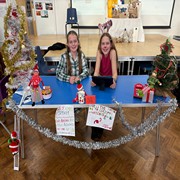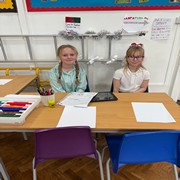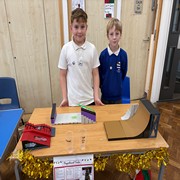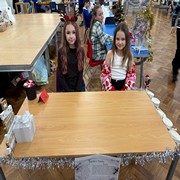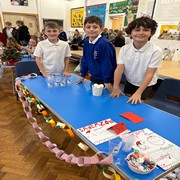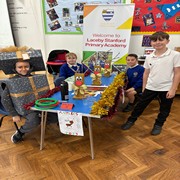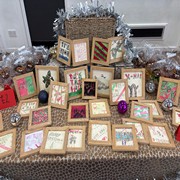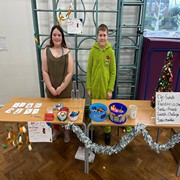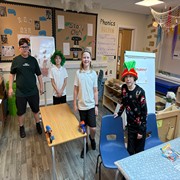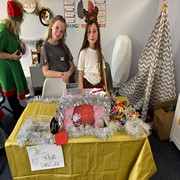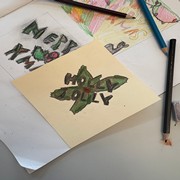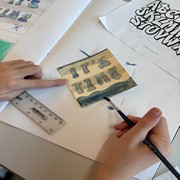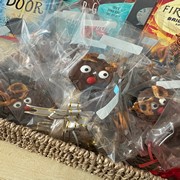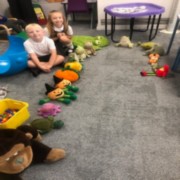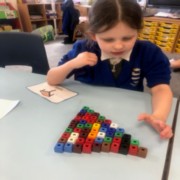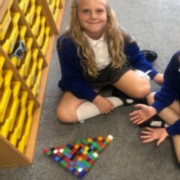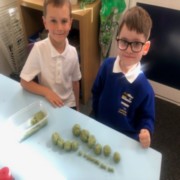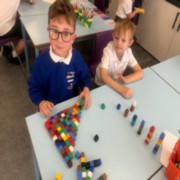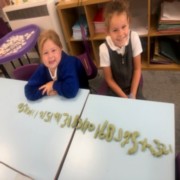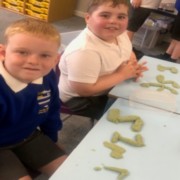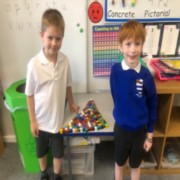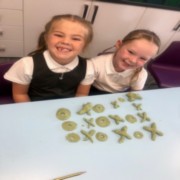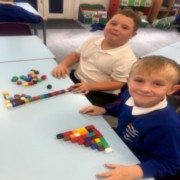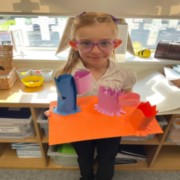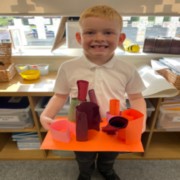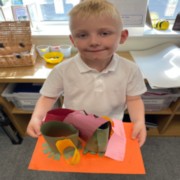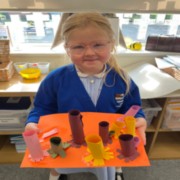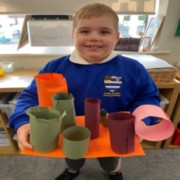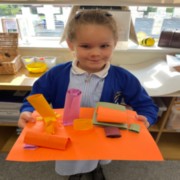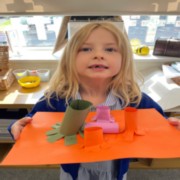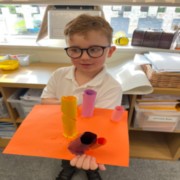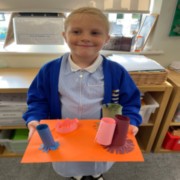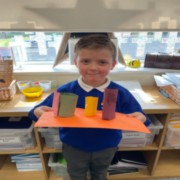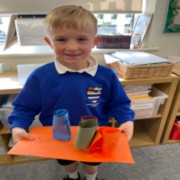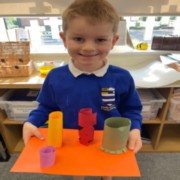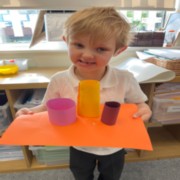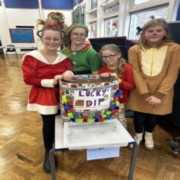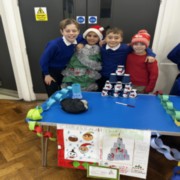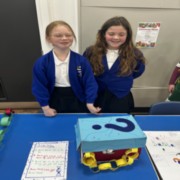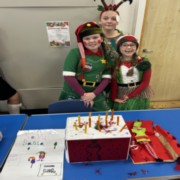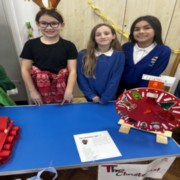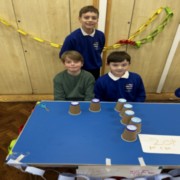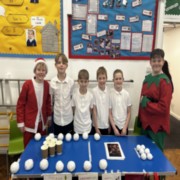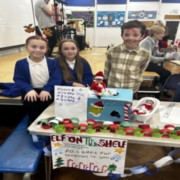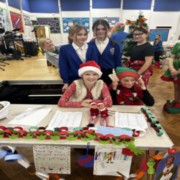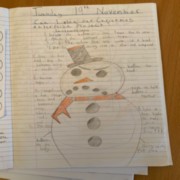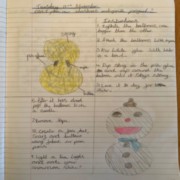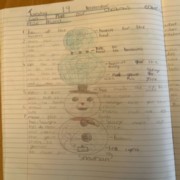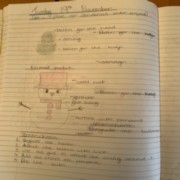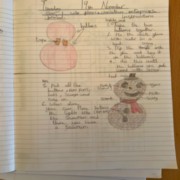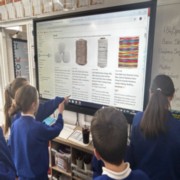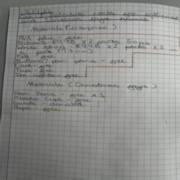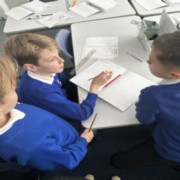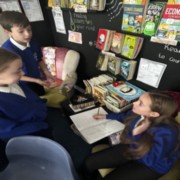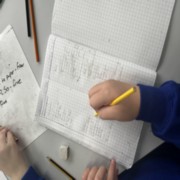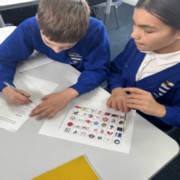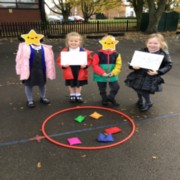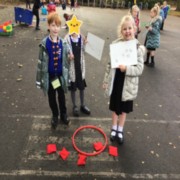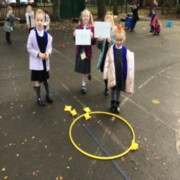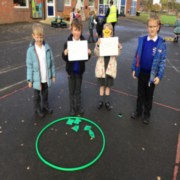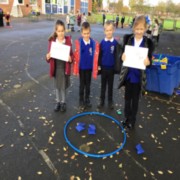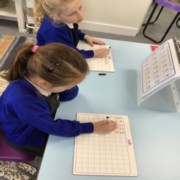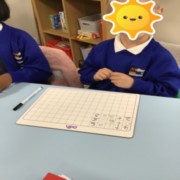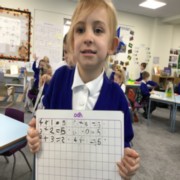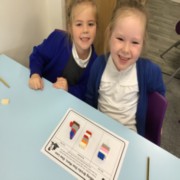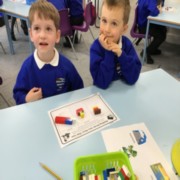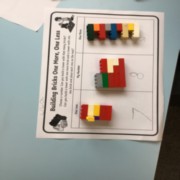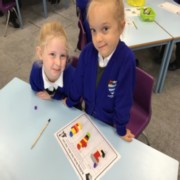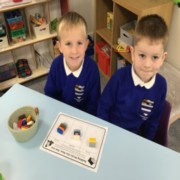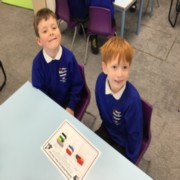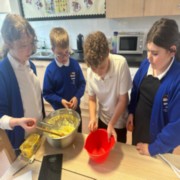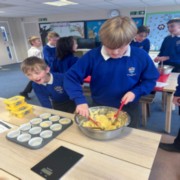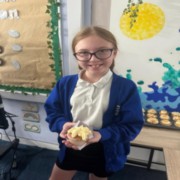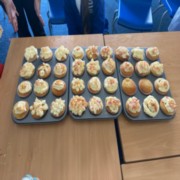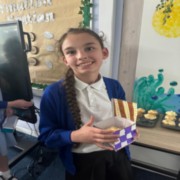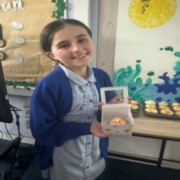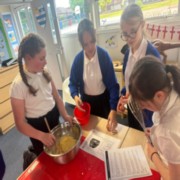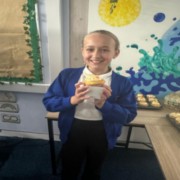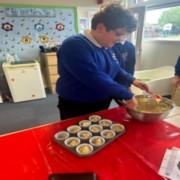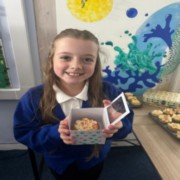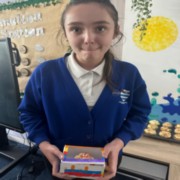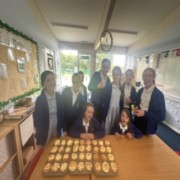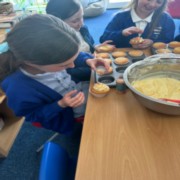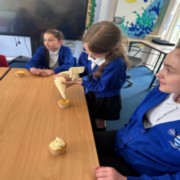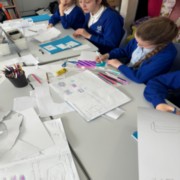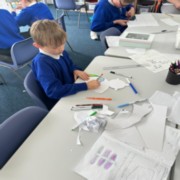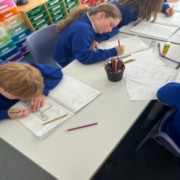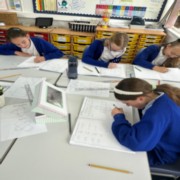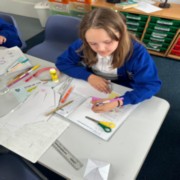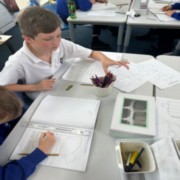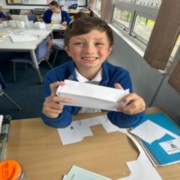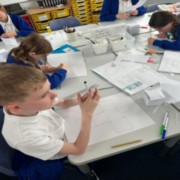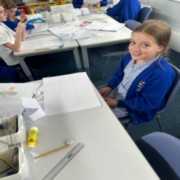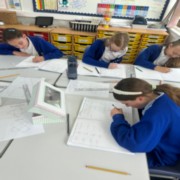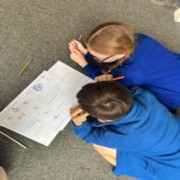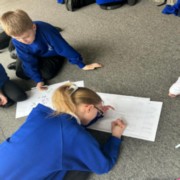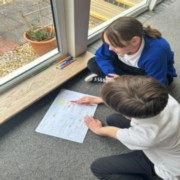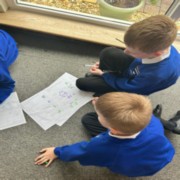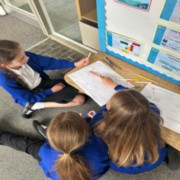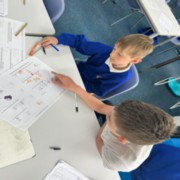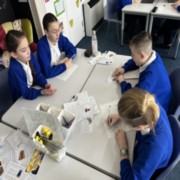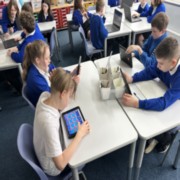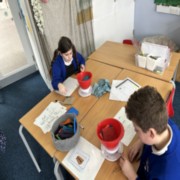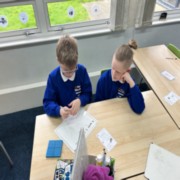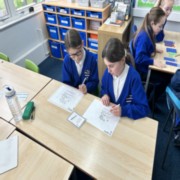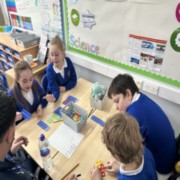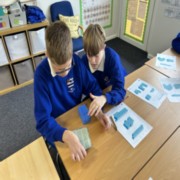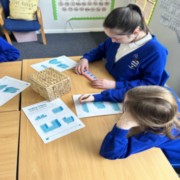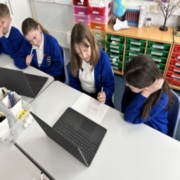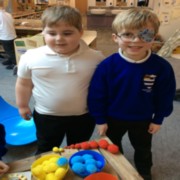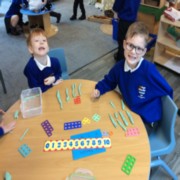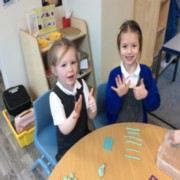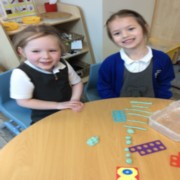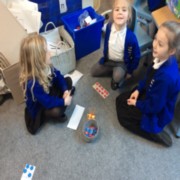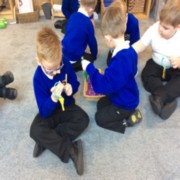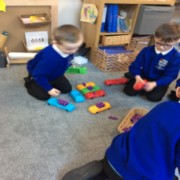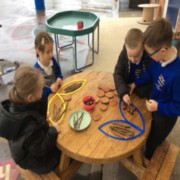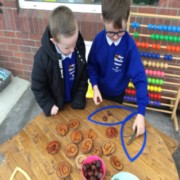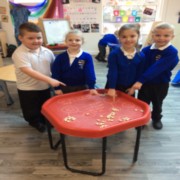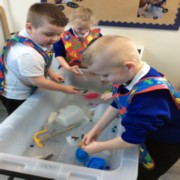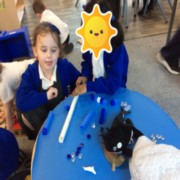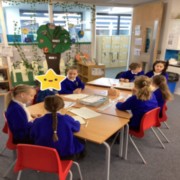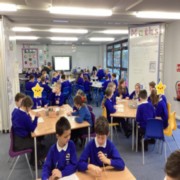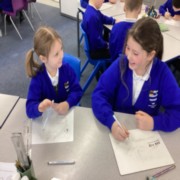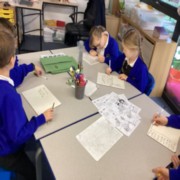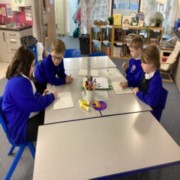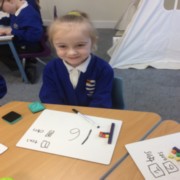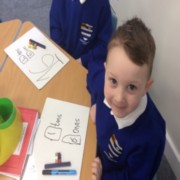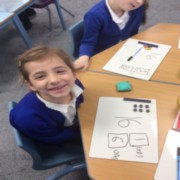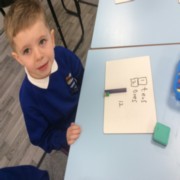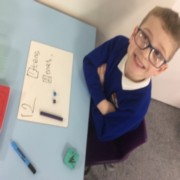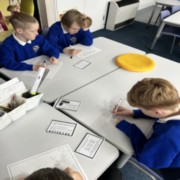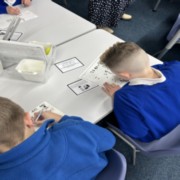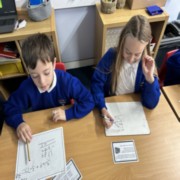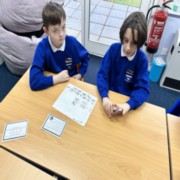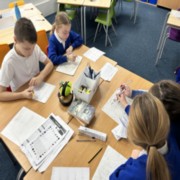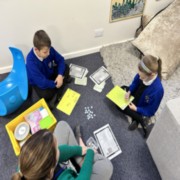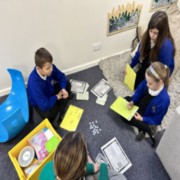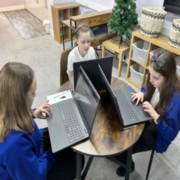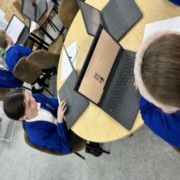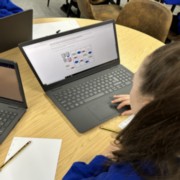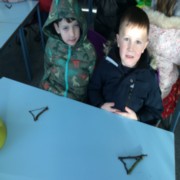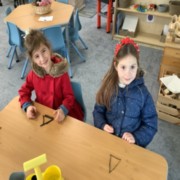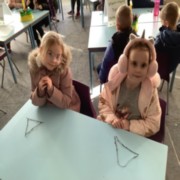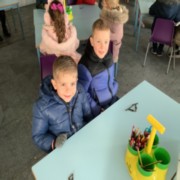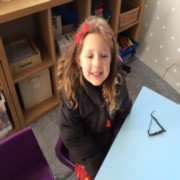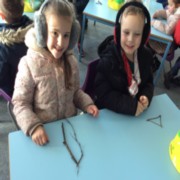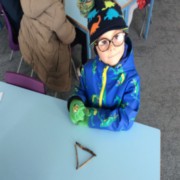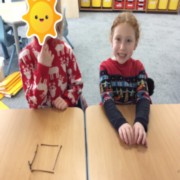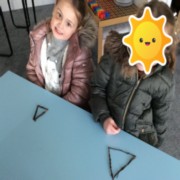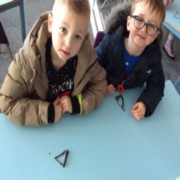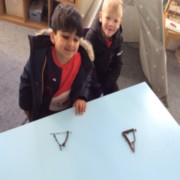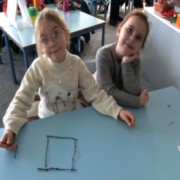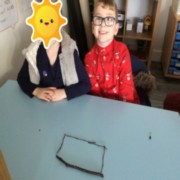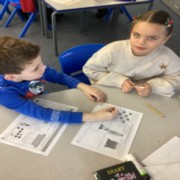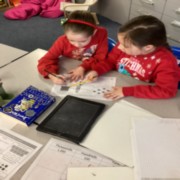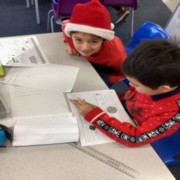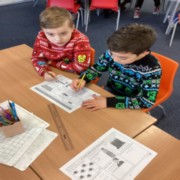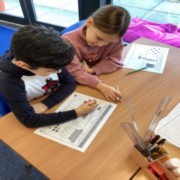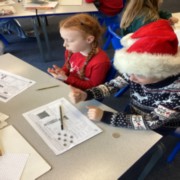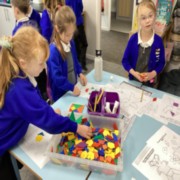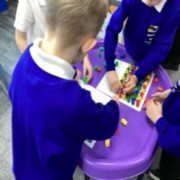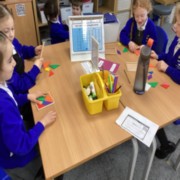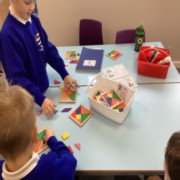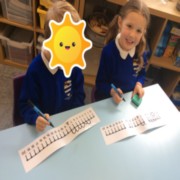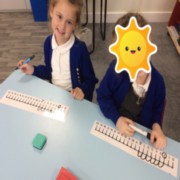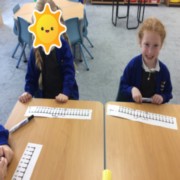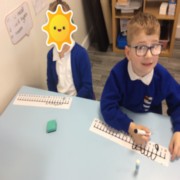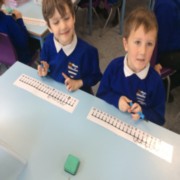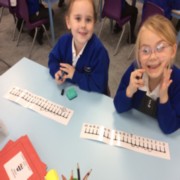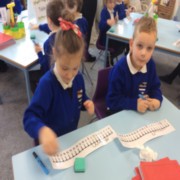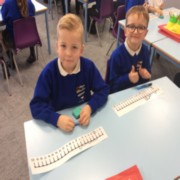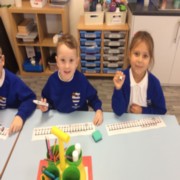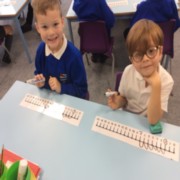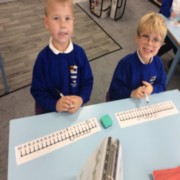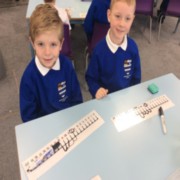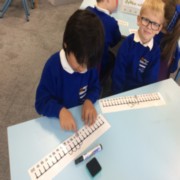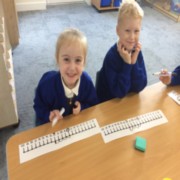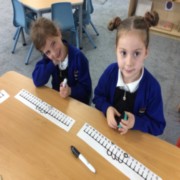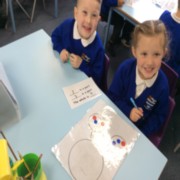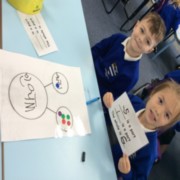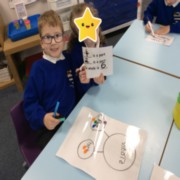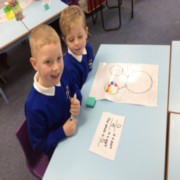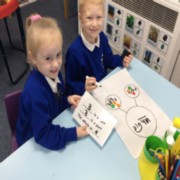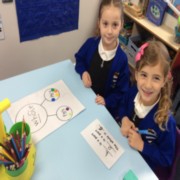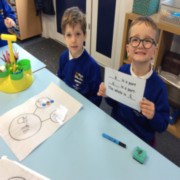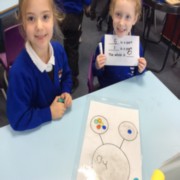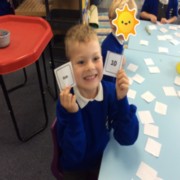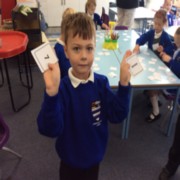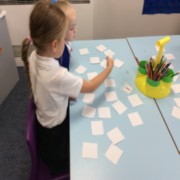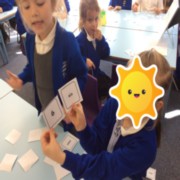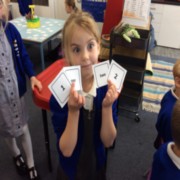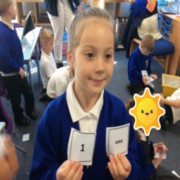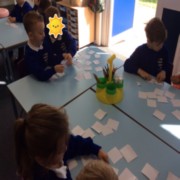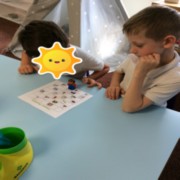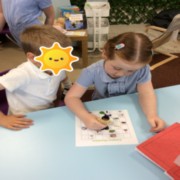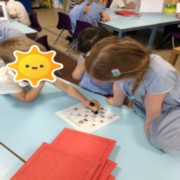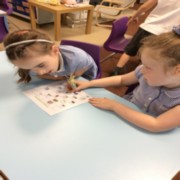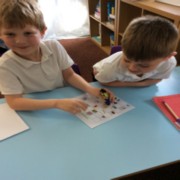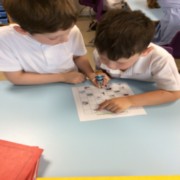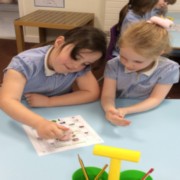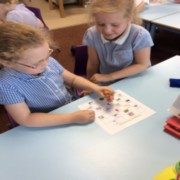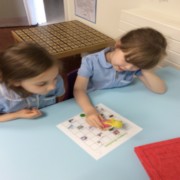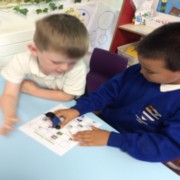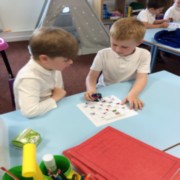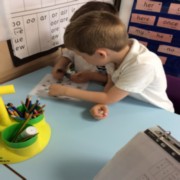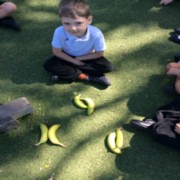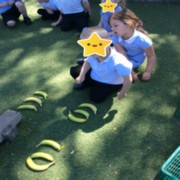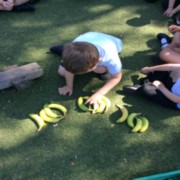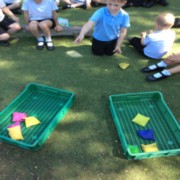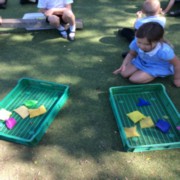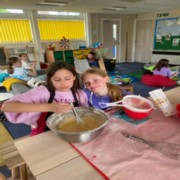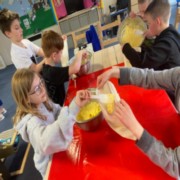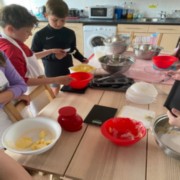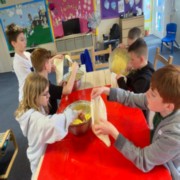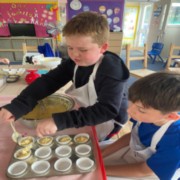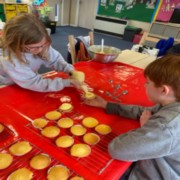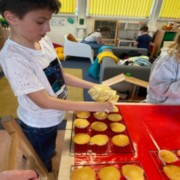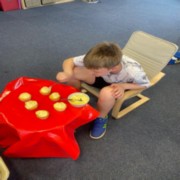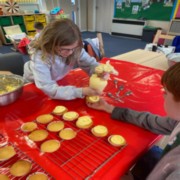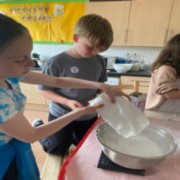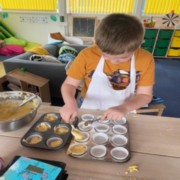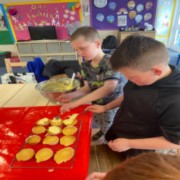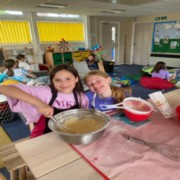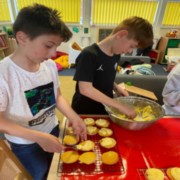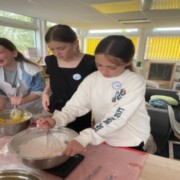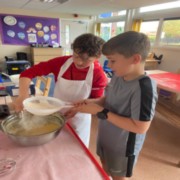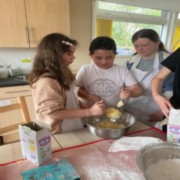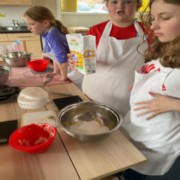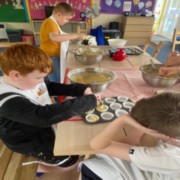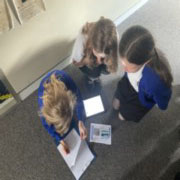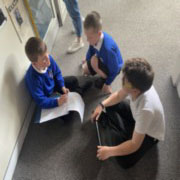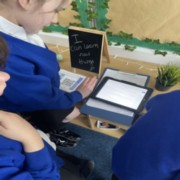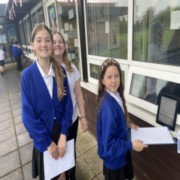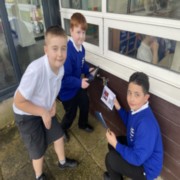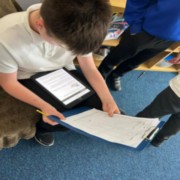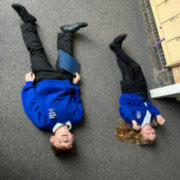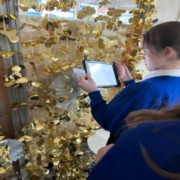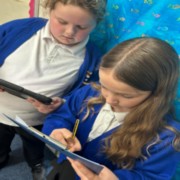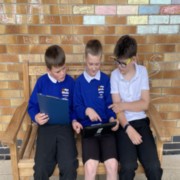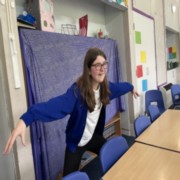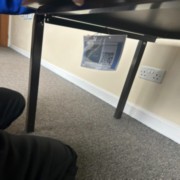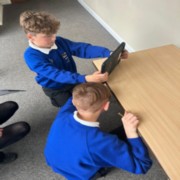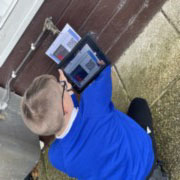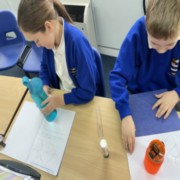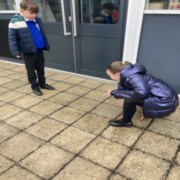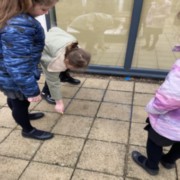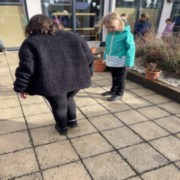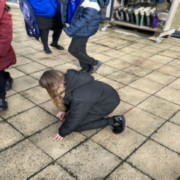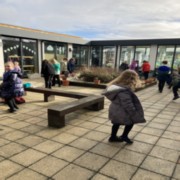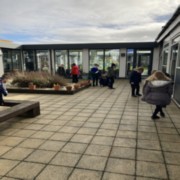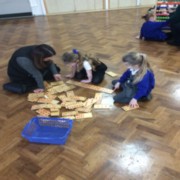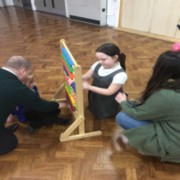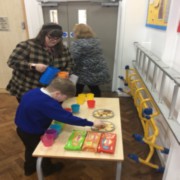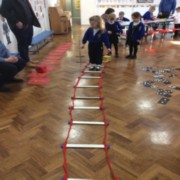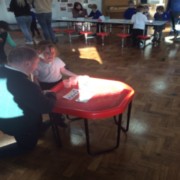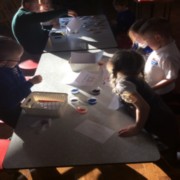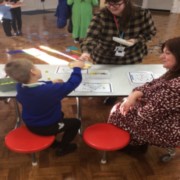Mathematics
The curriculum at Laceby Stanford Primary Academy
Traditionally, Maths has been taught by memorising key facts and procedures, which tends to lead to superficial understanding that can easily be forgotten. At Laceby Stanford Primary Academy, we believe that children should be able to select which mathematical approach is most effective in different scenarios.
All pupils can achieve in mathematics! There is no such thing as a ‘Maths person’, that is the belief that some pupils can do maths and others cannot. A typical Maths lesson will provide the opportunity for all children, regardless of their ability, to work through Fluency, Reasoning AND Problem Solving activities.
Maths is a journey and long-term goal, achieved through exploration, clarification, practice and application over time. At each stage of learning, children should be able to demonstrate a deep, conceptual understanding of the topic and be able to build on this over time.
There are 3 levels of learning:
- Shallow learning: surface, temporary, often lost
- Deep learning: it sticks, can be recalled and used
- Deepest learning: can be transferred and applied in different contexts
White Rose Maths Scheme
We use the White Rose scheme of work, which sets out a progression for learning based on the belief that, given the right opportunities, every child can succeed in Maths. This is termed a Mastery approach; rather than rote-learning methods, children develop a deep understanding of mathematical concepts, creating a solid foundation on which to build future learning. The White Rose Maths scheme is used as a basis for the Long and Medium Term Planning across all year groups. This not only ensures coverage of the whole curriculum but has been designed to build upon previous skills and knowledge. This is supplemented with a variety of other resources.
Multiple representations for all!
Concrete, pictorial, abstract
Objects, pictures, words, numbers and symbols are everywhere. The mastery approach incorporates all of these to help children explore and demonstrate mathematical ideas, enrich their learning experience and deepen understanding. Together, these elements help cement knowledge so pupils truly understand what they’ve learnt.
All pupils, when introduced to a key new concept, should have the opportunity to build competency in this topic by taking this approach. Pupils are encouraged to physically represent mathematical concepts. Objects and pictures are used to demonstrate and visualise abstract ideas, alongside numbers and symbols.
Concrete – children have the opportunity to use concrete objects and manipulatives to help them understand and explain what they are doing.
Pictorial – children then build on this concrete approach by using pictorial representations, which can then be used to reason and solve problems.
Abstract – With the foundations firmly laid, children can move to an abstract approach using numbers and key concepts with confidence.
Maths Overview
Maths |
|||||||
|
Early Years (Rec) |
Year 1 |
Year 2 |
Year 3 |
Year 4 |
Year 5 |
Year 6 |
Autumn Term |
1. Counting objects & number recognition to 5, then beyond |
1. Place Value to 10 |
1. Place Value |
1. Place Value |
1. Place Value |
1. Place Value |
1. Place Value |
Spring Term |
1.Numbers & Place Value to 5, 10, then beyond. |
1. Place value to 20 |
1. Money |
1. Multiplication and Division |
1. Multiplication and Division |
1. Multiplication and Division |
1. Ratio |
Summer Term |
1.Number Recognition & Place Value to 20 |
1. Multiplication and Division |
1. Fractions |
1. Fractions |
1. Decimals |
1. Shape |
1. Shape |
Our maths curriculum in Key Stage 1 and Key Stage 2 follows the White Rose Maths Primary Scheme of Learning. To find out more visit: https://whiterosemaths.com/resources/schemes-of-learning/primary-sols/ |
|||||||
Fluency, Reasoning and Problem Solving:
Reasoning and sense making are the foundation of mathematical competence and proficiency, and their absence leads to failure and disengagement in mathematics instruction
At Laceby Stanford Primary Academy, we ensure that the three main aims of the National curriculum - fluency, reasoning and problem solving - are included and intertwined through each unit of work linked to a strand of Mathematics. The three aims are taught explicitly and the use of STEM sentence frames in every lesson supports children in proving and explaining their reasoning and problem solving skills. This will allow our learners to think mathematically, work independently and explain mathematical processes in depth, therefore providing deep and purposeful mathematical learning.
Basic skills
We are committed to ensuring that children leave each year group being able to confidently complete basic mathematical skills. It is essential that children are able to complete and recall basic skills in order to be able to achieve higher level of mathematics. We have developed a basic skills policy that lists the skills pupils need to master at the end of each year group. Teachers use 'Rapid Recall' sessions at the start of each maths lesson and daily questions to practise and recall these skills.
Flashback 4 – at the beginning of every maths lesson, children answer 4 questions. These questions consist of:
- A fluency question on a maths topic from last term
- A fluency question from the maths work last week
- A fluency questions from the current maths learning
- A problem solving question linked to previous/ current mathematics learning
About our Calculation Policy
The following Calculation Policy has been designed to meet the requirements of the National Curriculum 2014 for the teaching and learning of mathematics, and is also designed to give pupils a consistent and smooth progression of learning in calculations across the school,
Age stage expectations
The Calculation Policy is organised according to age stage expectations as set out in the National Curriculum. However it is vital that pupils are taught according to the stage that they are currently working at, being moved onto the next level as soon as they are ready, or are working at a lower stage until they are secure enough to move on.
Times Tables Rock Stars - TTRS
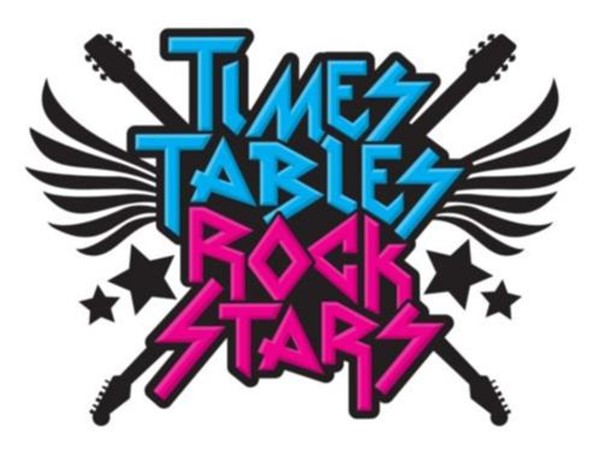
The new National Curriculum from 2014 states that: ‘By the end of year 4, pupils should have memorised their multiplication tables up to and including the 12 multiplication table.’
The new Key Stage 2 tests that came into place this year has an arithmetic test specifically on calculations. Therefore to ensure children are confident and prepared, learning tables’ facts plus recalling these quickly and accurately will give children a distinct advantage
Here at Laceby Stanford Primary Academy, we love maths. It’s a fantastic subject to learn and to teach which is why we use TT Rockstars to help children improve their times tables both at home and in school. Maths is a big subject and we appreciate that there’s more to it than times tables and there’s more to times tables than learning them off by heart. However, a lot of the rich, interesting maths is all about the multiplicative relationships and these are hard to fully grasp without fluent recall of the tables. For that reason, learning the tables is fundamental – they are a key facilitator to the maths that sits on top. We’ve always believed that.
When it comes to times tables, speed AND accuracy are important – the more facts your child remembers, the easier it is for them to do harder calculations. Times Table Rock Stars is a fun and challenging programme designed to help students master the times tables and help them reach the goal of being able to answer any times table (up to 12 x 12) in under 3 seconds.
TT Rockstars is also linked to our updated times tables system; teachers are able to target the children’s home learning to the stage that they are at.
It is part of the school homework policy that children in Years 2-6 are practising their times tables weekly; this is a fun and easy way for the children to complete this and the top coin earner and the most improved Rockstar will soon be praised on our rock board and assemblies!
The children can access TT Rockstars easily online; we have included a guide below on how to access this. We appreciate your support with helping your child improve their times tables. Please feel free to contact your child’s teacher if…
- You have username or password issues
- Something isn’t working or you’re not sure how it works
- You have a suggestion
- You have something nice to say about ttrockstars.com!
TTRS Parent Guide 1TTRS Parent Guide 2
Each year group will have their own targets which are outlined below:
FS and Y1- Counting on in steps of 2, 5 and 10
Y2- 2, 5 and 10.
Y3- 2,3,4,5,8,10
Y4- ALL Tables facts To 12× 12
Y5- ALL and completed 12× 12 mixed tables square in under 8 minutes
Y6- ALL and completed 12× 12 mixed tables square in under 6 minutes
TT rockstars is a daily practice of the times tables, through listening to rock music. Pupils have to answer 50 questions and time themselves. This will then work out your rick status. The idea is that pupils’ rapid recall will become quicker for each times table.
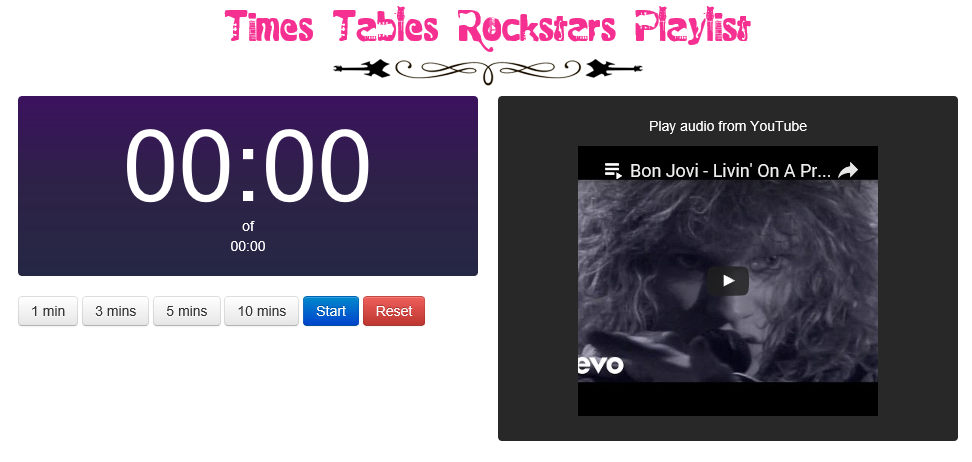
Here are some websites that offer games, grid challenges and interactive tests:
For more information please go to the website www.ttrockstars.com
The booklets below have some great information about the level and type of work we do in class and aome helpful ideas for home learning activities:
Year 6 Christmas Enterprise Success
Year 6 Christmas Make £5 Grow Success
Year 2 Maths: Learning About Time
Years 5 and 6 Maths Collaboration
EYFS and Year 1 Maths Collaboration
Science Investigation- Soil Permeability
Multiplication and division collaboration
Maths collaboration: Reasoning & Problem solving
Years 3 abd 4 Maths collaboration
Year 1 and 2 Maths Collaboration:
Problem Solving and Reasoning Skills Involving 2D and 3D Shapes
Chesskids is Fun!
Empower children to learn the timeless game of Chess on the world’s #1 Chess site for kids! Our learning tools will keep kids motivated to learn and improve their Chess skills. More importantly, learning Chess will give them skills that they can take with them throughout life: strategy, tactics, creativity, perseverance and calculated risk-taking.
A variety of learning tools, puzzles and real-time Chess against our computer robots or other humans, provide brain-stimulating challenges and hours of entertainment to kids, even through the natural growing pains of learning the demanding game of Chess.
ChessKid boasts a fully curated curriculum, video content and a Level Progression system keeps kids hungry to learn and motivated to keep improving and moving up. So whether your kid is an eager Knight or an experienced Queen, you will notice immediate differences in their over-the-board quality and game results!
The game of Chess is a timeless game that will give your child a lifetime of benefits. Give your child the gift of Chess.
Link to the webpage What is Chesskid
✨ Year 6 Christmas Enterprise Success! ✨
Our Year 6 pupils worked brilliantly as a team to plan, design and create their own Christmas game stalls for the Christmas Fair – and they were a huge success!
The stalls were extremely popular, and pupils loved taking part. It was wonderful to see so much creativity, teamwork, problem-solving and excellent entrepreneurial skills on display.
We were incredibly proud of the effort, enthusiasm and independence Year 6 showed throughout the project. Well done, Year 6 – you should be very proud! 🌟👏
Year 6 Christmas Make £5 Grow Success!
Our Year 6 pupils have been busy this half term taking part in Virgin Money’s “Make £5 Grow” project, learning valuable skills in teamwork, creativity and financial responsibility. Working together, the children designed, created and marketed their own festive products, including beautifully crafted art frames and delicious reindeer pops.
Their hard work certainly paid off, with both products proving popular at our Christmas events and helping the pupils make an impressive profit. Well done to Year 6 for showing such initiative, collaboration and Christmas spirit!
Fun with Numbers
The Year 2 children had a great time exploring numbers in a hands-on way! They loved counting a variety of familiar objects, which helped them understand the concept of quantity. The children were also very creative, molding playdough into different numerals and stacking cubes to build larger numbers. This allowed them to physically construct and visualize what numbers represent. A fun challenge was when they had to estimate and then count how many frog toys live in their classroom, turning Maths into a fun treasure hunt.
Paper LandscapesPaper Landscapes
Year 1 have been learning how to create 3D cylinders in different ways and attach them to a base - creating a landscape out of paper. Mrs Smith was impressed by the vocabulary we could use to describe our landscapes.
Pupil 1: "It was tricky at first to roll the cylinder and keep it rolled up but I managed to make short, tall, and wide ones."
Pupil 2: "I cut shapes in my cylinders like windows."
Pupil 3: "I managed to get one cylinder to look like it was floating because it was attached to another one."
Pupil 4: "My landscape is varied because there are so many different heights of cylinders."
Christmas Fayre
A huge well done to our amazing Year 6 pupils who created, planned, organised and led our Christmas games at the Christmas Fayre last week! It was amazing to see all you hard work and team work!! Superstars! 🌟
Barley Class Enterprise!
In Year 6 we have decided to create our very own festive snowman for our Enterprise Project.
We looked at some existing design ideas for inspiration and then designed our own designs clearly labelling these and ensuring we listed the materials we would need to create these.
In order to decide on a price to sell our products, we conducted some market research to find out the price that we could reasonably sell this item, we then deducted the cost of materials and calculated our potential product.
As well as this, pupils will be creating a Christmas game for the fayre too!!
Addition Facts
This week we have been working out addition facts with beanbags. Outside we generated different combinations of beanbags landing in and out of the hoop. We drew pictures of these and wrote number sentences to match. When we returned to the class room we recalled the addition facts. What fun we had!
Child 1: I love maths outside because it’s always easy to understand.
Child 2: I got all 5 beanbags in the hoop so 5+0=5!
Child 3: We drew four different pictures.
Child 5: I learnt how to write a number sentence.
More or Less?
This week Year 1s have been solving problems of 1 more and 1 less than a given number.
We have used different materials, number lines, ten frames and today we used Lego.
It has been so much fun and we all know 1 more and 1 less than numbers to 20.
Basic Skills

Today in basic skills we have been focusing on our 4 times table. This is one we are finding particularly tricky as a class. We have been playing games to help us remember it more effectively.
“We played a game where if you said a multiple of 4 you were out!”
“It makes it more fun learning them when we get to play as game as well!”
Year 6 are bakers! 🧁
To celebrate the completion of our successful maths project surrounding baking, we put our packaging to the test and created some of the most delicious cupcakes! We followed a recipes independently, measuring the ingredients accurately. We then ensured all the cupcakes were equal - we couldn’t have anyone having a bigger cake! And finally we used precision and care in creating different designs within the icing. We tested out our packaging to see the finished result. Some exceptional work created - and some extremely yummy cupcakes to enjoy! 😋
We are mathematicians! 👩🏻🏫
In maths this week year 6 have been using a variety of skills surrounding our current baking project. From ratio, proportion, costings, profit and loss, to most recently packaging and the 3D nets involved with this. We have looked at packaging that has already been created and used for cupcakes and we have designed and planned our own. Today we created a prototype to ensure our measurements and net shapes were accurate and would work correctly for our packaging. Next week we will be able to show the final product, even including a cupcake! 🧁
Following directions
Year 1s have been learning all about directions this week. We went outside with a partner to give and follow directions using our vocabulary: forwards, backwards, right, left, half turn, quarter turn and full turn.
We always love maths outside and this week the children had really understood the new vocabulary!
Well Done Year 1s.
Final Maths Revision
Our Year 6 pupils working with their peers on the final revision session, ready for the Maths SATs papers tomorrow. Amazing discussions, explanations and reasoning skills showing their learning and understanding in different ways- you’ve got this Year 6!! 🌟
Year 2 Maths: Learning About Time
The children have been learning facts about time and have been using analogue clocks to show different times during the day.
This week they have looked at o’clock, half past, quarter to and quarter past times.
Next week they will be learning about five past, ten past, twenty past, twenty to etc.
It would be great if they could continue practising telling the time at home too.
D- I know that there are 60 seconds in a minute.
S- 60 minutes equals 1 hour.
E- There are 24 hours in a day.



Scavenger Hunt
Year 6 had an afternoon scavenger hunting! To help with their Maths revision, they worked in teams to find the different questions around the school. They scanned each QR code to reveal the question, worked as a team to solve this and then collect the letter to form a funny joke! Some questions were fun challenges…. Stand as a scary scarecrow for 30 seconds!




3D shape hunting
We have been learning about the properties of 3D shapes. We went on a 3D shape hunt and look what we found:






Maths Basic Skills
Every day the children practice their basic skills in Maths. They work on the four operations; addition, subtraction, multiplication and division. They have been doing this in fun and creative ways.
C- I love the Top Marks challenges that I play on the ipad. I am getting a better score!
D- I have really liked the different challenges that we go and do around the room.
P- We use Base 10, Numicon, cubes and whiteboards to help us.
N- I loved it when we used chalk to challenge our friends to multiply two numbers.




Kahoot!

Barley Class love to use Kahoot! This morning pupils consolidated their learning on multiplication to answer a range of multiplication questions, including word problems, in a ln online quiz! Pupils worked in teams to solve the questions, against the clock! Speed was key!


Fractions of amounts
This week in our basic skills we have been looking at fractions of amounts. Today we worked together to have a go at drawing and labelling our own amounts outside. We worked on making sure the numerator and denominator of our amounts were in the correct places.




Years 5 and 6 Maths Collaboration
Year 5 and 6 pupils worked collaboratively this week, combining both their knowledge on fractions and measures to solve problem solving questions based on this area in Maths.
Our challenge used trial and error which was rather difficult! We kept going and never gave up to find the answer!
It was great to put our skills together and work together to solve the questions!
EYFS and Year 1 Maths Collaboration
Today the Year 1 children went into our Early Years Class to be ‘mini-teachers’. The aim of the session was to help the younger children with their maths learning and fill our Year 1 children with confidence to explain problem solving to others. The session was really successful. Pupils enjoyed the collaboration and said:
Pupil 1: I like the big children coming to help me.
Pupil 2: I explained to A that 1 more than 9 is 10.
Pupil 3: I helped some children count the keys up to 15.
Pupil 4: B helped me make numbers in the dough.
Maths Collaboration: Money
The Year 2 children helped the Year 1 children learn all about money. They were really good teachers; explaining how to count with coins, showing them ways to solve shopping problems and how to work out change.
C- I used the visualiser to explain the question to everyone.
C- I used my fingers to show how to take away.
N- I explained how to work out the answer.
A- The Year 2 children read the prices and helped me.
O- I drew ten 1p coins to show the Year 1 children how to exchange.
P- If something was 12p, I showed the Year 1 children how to start with a 10p and then add on the ones.
Timestables Collaboration
Today in Pumpkin and Willow class we have been collaborating. We collaborated on timetables. Different tables had different activities to do such as; rolling a dice and multiplying, using iPads for 1 minute maths games, challenge cards and year 4 teaching 3 year how to work out different multiplication questions.
"Collaboration is always really fun"
"I like it because I learn things"
"We can be like teachers showing year 3 skills they not have used yet!"




Buttercup Learning Share
Buttercup Class were so excited to share their learning with their families.
Here are some of the things we shared:
In maths we shared how we can represent numbers in different ways and doubling. We also showed our family members how fantastic we are getting at subitising.





Science Investigation- Soil Permeability
Today in Pumpkin class we have been scientists. We identifed how to make careful observations and observed how much water had filtered through different types of soil. We made sure we used the same equipment and length of time for each observation to make our investigation a fair one. We also found that we were using skills from other lessons, such as maths for reading the units of measurement and time. The conclusion to our investigation was that the soil from our tyre plants was the most permeable.




Multiplication and division collaboration
Today Pumpkin and Willow classes have collaborated with multiplication and division. We paired up and each had a go at rolling the dice and adding up the sum to multiply this with the next roll of the dice. Once we had completed the multiplication sentence, we used this to write division facts.
"It was quite a fun game"
"I really like working with year 4!"
"I love helping the year 3, I feel a bit like a teacher"
Tens and Ones
Year 1s this week have been representing the ‘teen’ numbers using different equipment. They have also been able to record how many tens and ones in each number.
Pupil 1: I like using these tens and ones ‘cos they help me.
Pupil 2: I can use all the ‘teen’ numbers really well.
Pupil 3: sixteen has 1 ten and six ones, look (showing me their work).
Maths collaboration: Reasoning & Problem solving
Blossom and Barley pupils have been working together to solve different reasoning and problem solving questions using their wide range of math skills. These problems were to extend their knowledge by applying what they know to solve the problems. Pupils worked in small groups and pairs and used concrete, technology and pictorial resources to help solve the answers.
2D Shapes
This week Year 1s have been using sticks gathered from outdoors to make different 2D shapes.
We started with triangles and went on to make squares and rectangles.
Pupil 1: I used 3 sticks to make a triangle.
Pupil 2: we needed 1 more than 3 to make a square or a rectangle
Pupil 3: Maths is great when we get to go outside.
Pupil 4: I never knew we could make shapes with sticks!
Pupil 5: We made triangles and squares.
Years 3 and 4 Maths collaboration
Year 3 and 4 have been collaborating with their maths skills this half term. Year 4 have been learning all of the times tables and are helping to pass on some knowledge and skills to year 3. Today we looked at solving problems using the 4 and 8 times tables.
Year 1 and 2 Maths Collaboration:
Problem Solving and Reasoning Skills Involving 2D and 3D Shapes
Together, the children have been exploring 2D and 3D shapes.
The extra challenges (continuous provision) in the classrooms have enabled the children to extend their learning. They challenge and support each other in small groups and enjoy problem solving together.
Pupil Comments
I’ve liked the Year 2s teaching me things I didn’t know. I know lots of names of shapes now.
My Year 2 partner has been giving me ideas about how to sort shapes into different kinds of groups.
We’ve been counting sides of shapes and putting them in order.
The Year 2 children told me about vertices and I learnt how to count them on 2D shapes.
With my friend, I found all the shapes with fewer vertices than a hexagon.
Next time, I have seen some other problems solving challenges that I want to have a go at!
DT Enterprise Projects
Year 6 completed their DT enterprise projects ready to sell at the Christmas fayre. Pupils designed and then calculated the costings for this to ensure they made the most profit.
Using a range of DT skills, they then created their designs!
Using a Number Line
Year 1s have been using number lines to subtract this week. They were able to work practically and transfer word problems into number sentences. Using jumps back on the number lines, pupils were able to answer problems accurately. Well done Year 1s.
Next step is to work with abstract number sentences.
Times Tables
The Year 2 children are enjoying learning their 2, 3, 5 and 10 times tables.
Every day they love to sing along to their favourite Maths songs.
They are getting more and more confident each day, as well as having lots of fun.




Addition
Year 1 have been learning how to make a whole from two parts. We can split one whole into two parts in different ways. We use stem sentences to explain the parts of a whole.
Parts of a whole
Year 1 have been learning how a whole can be partitioned into different parts. Taking 5 bean bags, we threw at the target and recorded how many landed in and out of it. We found many combinations of how the bean bags landed. Back in the classroom we drew the combinations. We had lots of fun and learnt so much about number.
Child A: ‘We did a kind of PE – Maths lesson it was great!’
Child B: ‘My group found 6 different ways of doing it.’
Child C: ‘We had 5 as a whole and then 2 different parts.’
Child D: ‘We love maths outside.’
Reasoning and problem-solving
This week, Blossom Class have been working hard at trying some reasoning and problem-solving questions. We have focused on reading the question carefully, highlighting key information and deciding which operation we need to use. Today we had a practical session using whiteboards, coaching our buddies and collaborating with our peers.



Representing Numbers
Year 1 have been learning how to represent numbers in digits and as words. We have enjoyed playing Match the Pairs and Bingo this week to help us.
Using 10s to count to 100
In year 1 Maths we have started a new module this week; Place Value (within 100.) Today as our starter activity we used 10s to count to 100. We did this by throwing beanbags into a target of 10. We then had to calculate our score up to 100.
"Me and my partner got all our bean bags in the target, so we got 100 altogether."
"We missed a few so we got 60."
Where am I going!
Year 1s today have been using new vocabulary today to direct mini people around their maps.
Forwards, Backwards, Left and Right
We really enjoyed moving the people from place to place and using our new directional vocabulary.
Child A: This is the best way to do maths!
Child B: I can send him to the beach and then to the swimming pool.
Child C: I know my left and my right now.
Healthy Eating and Sharing
This week it has been healthy eating week and we have focused on healthy lifestyles and learning about which foods we should have more/less of. Children have learned some new vocabulary such as 'carbohydrate' and 'protein'. We have also learned about Clean Air Day.
We have also been learning about sharing into equal groups in maths. We shared out bananas for monkeys at the zoo and shared out dinner for the 3 bears.
Year 6 have been baking 🧁
As part of our Maths lessons this week we have been learning about ratio, proportion, profit and loss. As a class we have looked at a recipe that was intended to make 6 cupcakes and we had to calculate the ingredients needed to make 42 for the class (and a few extras for teachers of course!). Once we had calculated this, we researched the size of packaging our ingredients were sold in, for example butter in 250g. Continuing our research skills, we compared the cost of the ingredients across different supermarkets. So to end the week we combined our baking and maths skills to measure accurately, portion up the mixture and decorate some yummy cupcakes! These were definitely enjoyed by all! 👩🍳
Maths Teamwork
Year 6 pupils showed their Maths knowledge with a fun activity, working in small teams. Mrs Smith & Miss Chilvers were so impressed with their teamwork and skills- great work Year 6! ⭐️
Maths Scavenger Hunt
Year 6 had an afternoon scavenger hunting! To help with their Maths revision, they worked in teams to find the different questions around the school. They scanned each QR code to reveal the question, worked as a team to solve this and then collect the letter to form a funny joke! Some questions were fun challenges…. Stand as a scary scarecrow for 30 seconds! Year 6 are ready for their tests today! #youvegothis #year6sats ⭐️
Year 6 Maths Circles ⭕️
Year 6 have been busy investigating circles. We learnt the different parts of a circle and how to find the diameter and radius of different size circles. We did this n a variety of ways and are now confident in solving reasoning questions on this!
Year 3 - Being a mathematician
In maths we have started to learn about perimeter and what it means. The children enjoyed taking our learning outside where we walked around the perimeter of shapes in the playground. They also used chalk to draw shapes in the quad for their peers to work out the perimeter by counting the sides of the square slabs.
Year 1 Maths Learning Share
We had a wonderful afternoon in Year 1, our grown ups came to look at how we learn Maths. We even had some juice and biscuits. Thank you to everyone who attended and left such lovely feedback.
"It was lovely to see all the creative ways that are used to teach Maths"
"It was really informative and fun ton see how children learn Maths"
"It was lovely to see how much they love being here"
"Staff friendly, welcoming and knowledgeable"
